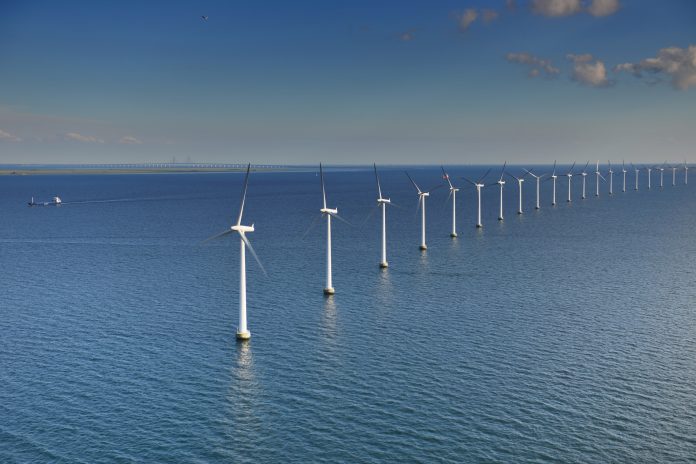Public investments in environmental science are shown to be a major driver behind the UK’s offshore wind sector. It delivers billions in economic value while also helping to protect the country’s marine environment
A new study has found that funding from the UK’s Natural Environment Research Council (NERC) has played an essential role in the sector’s growth, contributing an estimated £3.3 billion to the economy since 2000.
Offshore wind
The UK’s offshore wind sector has expanded significantly in recent years, becoming a key part of the government’s industrial strategy and a critical part of the national shift towards clean energy. As of the end of 2024, the UK was operating 45 offshore wind farms, generating 17% of the country’s electricity needs.
This sector currently supports around 32,000 jobs across the UK, with that number expected to more than triple to 100,000 by 2030. A significant portion of this growth has been demonstrated through scientific research and modelling funded by NERC, which helps accelerate development while protecting sensitive marine ecosystems.
A high return on investment
The report, commissioned by NERC and carried out by Human Economics and Howell Marine Consulting, estimates that the economic return on NERC’s investment in offshore wind-related science is 23 times the original input. Between £1 billion and £5.5 billion in value has already been realised, with an additional £3.6 billion potentially on the horizon over the next 25 years as the industry continues to expand.
This return has been achieved through improvements in environmental data, modelling and analysis that are now integral to nearly every stage of offshore wind development, from planning and regulatory approval to construction and ongoing operation.
Protecting nature and strengthening the economy
Not only is there a financial benefit, but the NERC’s funding has also supported the protection of the UK’s marine environment. Research has helped conserve marine wildlife, including seals and seabirds, and preserve the UK’s estimated £211 billion in marine natural capital. This balance between economic growth and environmental responsibility has made the offshore wind sector a global example of how green energy can thrive sustainably.
Scientific data produced with NERC funding has reduced delays, lowered risks, and improved decision-making across the board. It has helped government departments make informed policy and regulatory decisions, aided developers in navigating complex environmental requirements, and provided investors with greater confidence in the sector.
Collaboration across science and industry
Five NERC-funded research centres have been identified as key players in the development of the UK’s offshore wind capacity. These include the British Geological Survey, which provides seabed mapping, and the National Oceanography Centre, which contributes detailed ocean and tidal models. Other major contributors are the Plymouth Marine Laboratory, the Sea Mammal Research Unit, and the UK Centre for Ecology and Hydrology, each offering long-term data on marine life and ocean conditions.
These centres collaborate with industry partners, public agencies, and conservation bodies, ensuring that offshore wind development aligns with both economic goals and environmental protection.
The study demonstrates how strategic public investment in science can drive innovation and enhance national infrastructure, while also addressing climate change and conserving biodiversity. With the potential for billions more in economic value and tens of thousands of new jobs, the partnership between science and industry is set to remain a cornerstone of the UK’s energy future.











